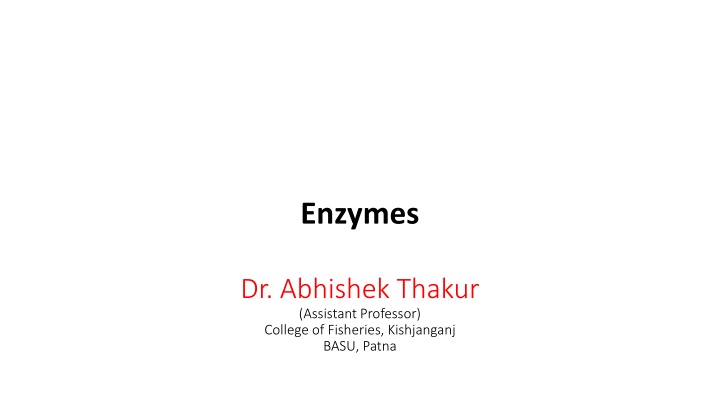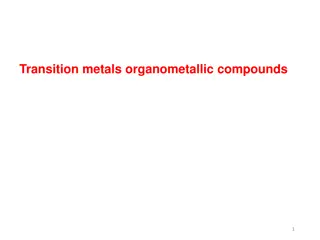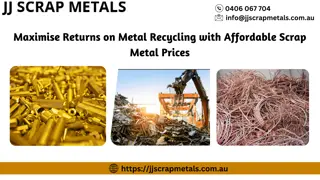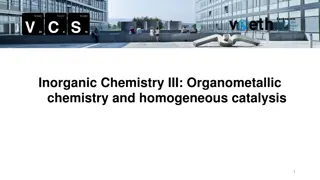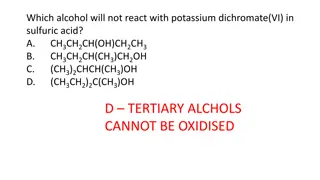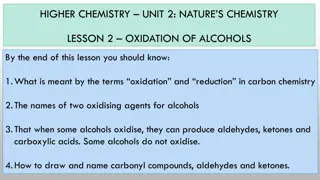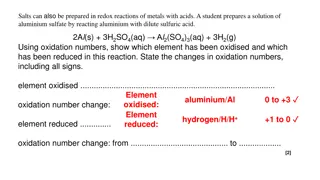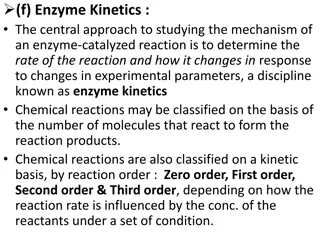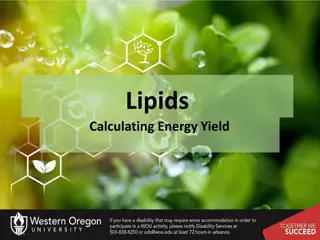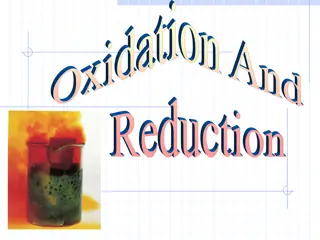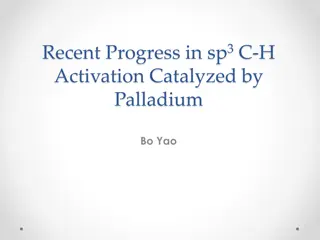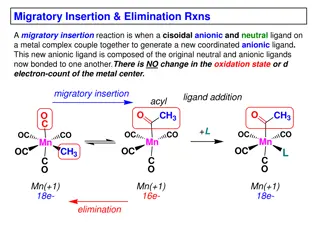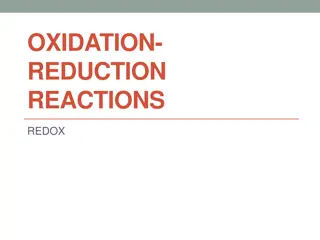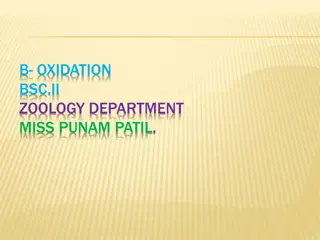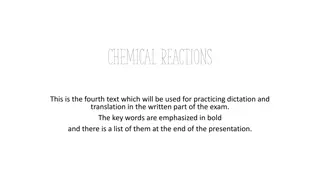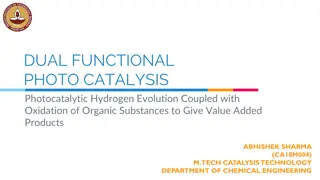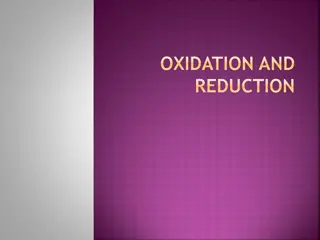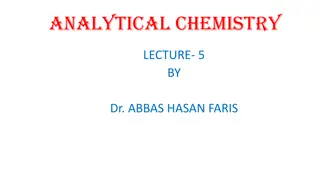Palladium Catalyzed Oxidation Reactions: Versatile Transition Metal
Palladium is a versatile transition metal used in organic synthesis, catalyzing both oxidative and nonoxidative reactions. Examples include the Wacker process and various cross-coupling reactions. However, decomposition of homogeneous catalysts poses a challenge. Ligands play a crucial role in stabilizing palladium(0) and promoting reactions. Recent developments focus on enhancing aerobic oxidation reactions and exploring new catalytic systems. Palladium Oxidase shows promising results in lowering costs, increasing efficiency, and improving selectivity in oxidation reactions.
Uploaded on Apr 16, 2025 | 1 Views
Download Presentation

Please find below an Image/Link to download the presentation.
The content on the website is provided AS IS for your information and personal use only. It may not be sold, licensed, or shared on other websites without obtaining consent from the author.If you encounter any issues during the download, it is possible that the publisher has removed the file from their server.
You are allowed to download the files provided on this website for personal or commercial use, subject to the condition that they are used lawfully. All files are the property of their respective owners.
The content on the website is provided AS IS for your information and personal use only. It may not be sold, licensed, or shared on other websites without obtaining consent from the author.
E N D
Presentation Transcript
Enzymes Dr. Abhishek Thakur (Assistant Professor) College of Fisheries, Kishjanganj BASU, Patna
Enzymes Enzymes Enzymes can speed up a chemical reaction without being altered. Enzymes are biological catalysts. Each acts on a specific substance. The specificity of enzymes is made possible by their structures. Enzymes are generally large globular proteins that range in molecular weight from about 10,000 to several million. Enzymes are extremely efficient. The turnover number is generally between 1 and 10,000 and can be as high as 500,000.
Enzyme Classification based on type of chemical reaction catalyzed Class Type of Chemical Reaction Catalyzed Examples Oxidoreductase Oxidation-reduction oxygen and hydrogen are gained or lost. Transfer of functional groups, such as an amino group, acetyl group, or phosphate group Hydrolysis (addition of water) Removal of groups without hydrolysis in which Cytochrome lactate deydrogenase oxidase, Transferase Acetate deaminase kinase, alanine Hydrolase Lyase Lipase, sucrose Oxalate isocitrate lyase of atoms decarboxylase, Isomerase Rearrangement of atoms within a molecule Glucose-phospahte isomerase, racemase Acetyl-CoA DNA ligase. alanine Ligase Joining of two molecules (using energy usually breakdown of ATP) synthetase, derived from
Enzyme Components Some enzymes consist entirely of proteins, most consist of both a protein portion called an apoenzyme; nonprotein component called a cofactor. Together they form a holoenzyme The cofactor can be a metal ion or a complex organic molecule called a coenzyme. Many coenzymes are derived from vitamins.
Mechanism of Enzymatic Action 1.The surface of the substrate contacts the active site of the surface . 2.Enzyme-substrate complex. 3.Substrate molecule is transformed breakdown of the substrate molecule, combination with another substrate molecule. 4.The transformed substrate molecules-the products of the reaction are released from the enzyme molecule because they no longer fit in the active site of the enzyme. 5. The unchanged enzyme is now free.
Factors Influencing Enzymatic Activity Temperature pH Substrate concentration Inhibitors Feedback Inhibition
